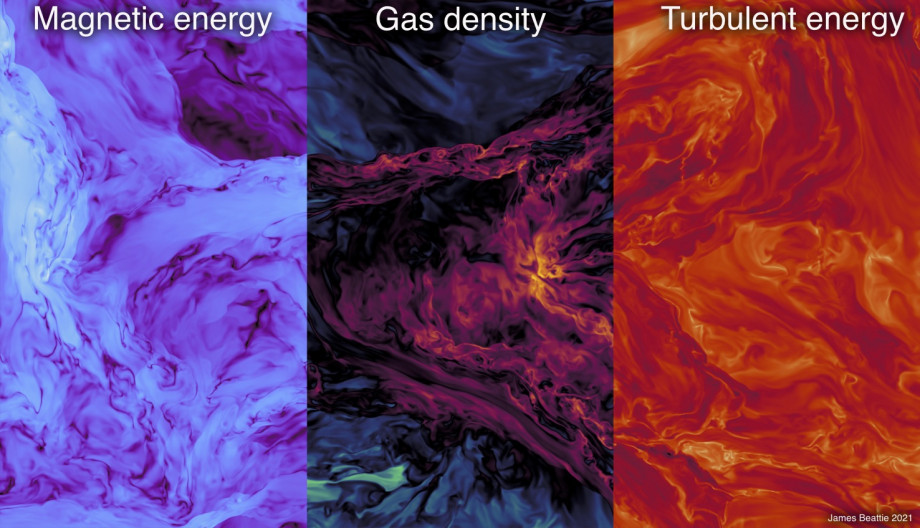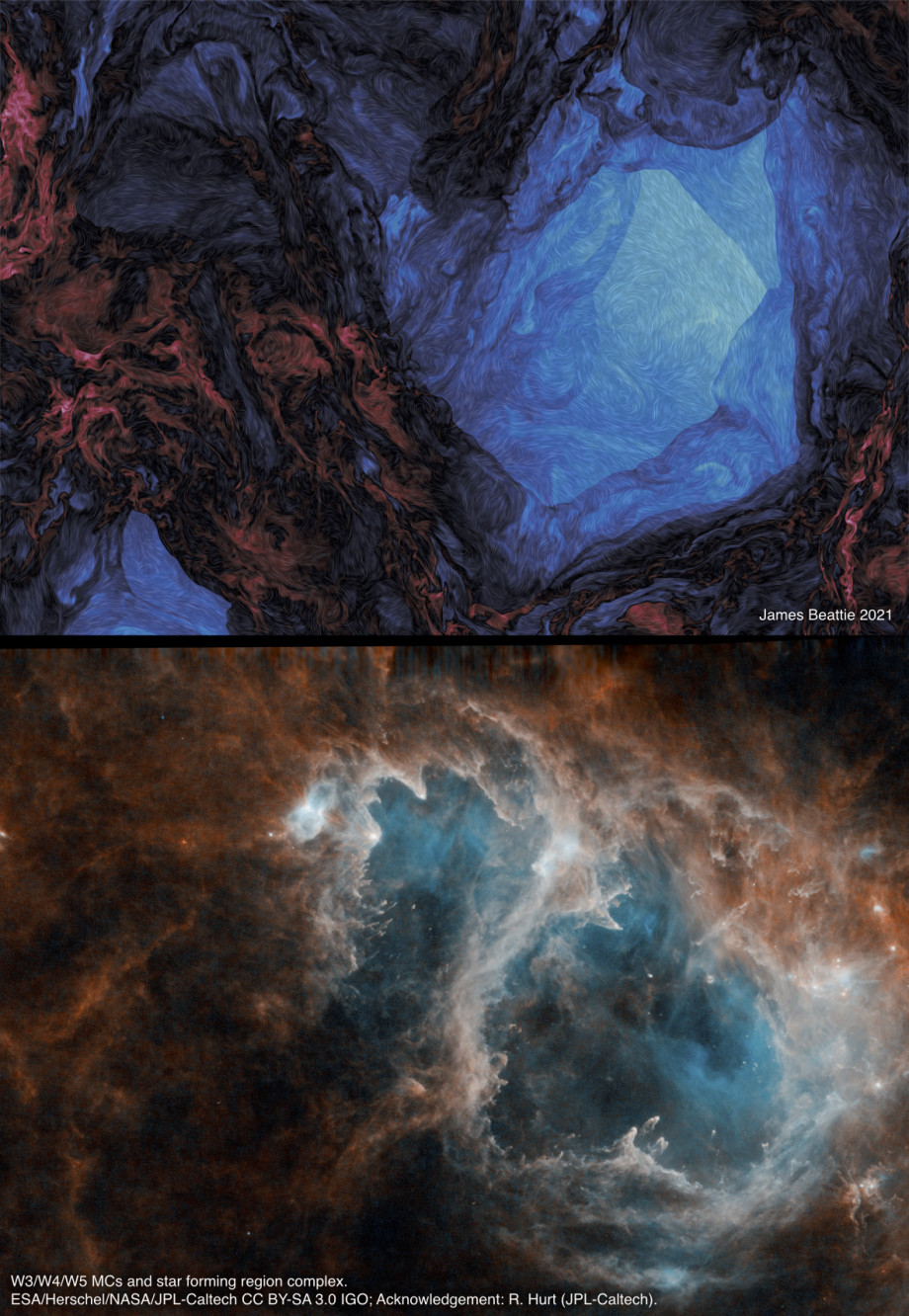Astronomy researchers are using Gadi’s scale and performance to test the next generation of their star formation simulations. They are simulating the random motions found in magnetised clouds of interstellar gas. These are complex flows of hydrogen gas spread thinly throughout our own, and other galaxies in the Universe. The clouds are undergoing supersonic, turbulent motions, interacting through gravity and magnetic fields, and collapsing in some of the ultra-dense regions to form powerful stars, like the Sun.
Computational simulations that run on the world’s biggest supercomputers aim to replicate the real turbulent phenomena as closely as possible. To do this, researchers need to use and create software specially designed to run for tens of millions of hours of computing time. Only then can the simulation start to cover the range of length, time and density scales that are essential to understand interstellar turbulence. This type of turbulence is so complex because it couples large and small scales, is a mixture of slow and ultra-fast motions, and has a gigantic range in density that spans many orders of magnitude. Getting an accurate computational representation of this turbulence therefore requires extremely high spatial and temporal simulation resolutions, and extremely efficient computational and processing tools.
Associate Professor Christoph Federrath from The Australian National University uses supercomputers around the world to run turbulence and star formation simulations. On Gadi, Federrath and PhD student, James Beattie tested their high-performance FLASH simulation package on 99,840 processors at the same time. By efficiently distributing large calculations across thousands of processors, researchers speed-up and transform the quality of research they can produce.
Mr James Beattie, says, “We wanted to push Gadi to its limits and run this code on more processors than we ever have before in Australia. This proof of concept shows that our version of FLASH works extremely well at large scales and that Gadi is highly-capable of running jobs that utilise a significant fraction of the whole machine. We are moving to ever more realistic simulations that take into account all of the complexity and chaos of real interstellar gas. These help inform astrophysical gas dynamics and star formation researchers all over the world. Gadi, and the next-generation of Australian supercomputers are going to be vital for helping us understand the nature of the turbulent interstellar medium.”
Testing high-performance software at extreme scales helps researchers develop their codes to run as efficiently as possible for the maximum scientific benefit. The mathematics and simulations of interstellar turbulence in galaxies are remarkably similar to fluid flow simulations used for understanding the movement of air and water on Earth. Thus, scientific and technological advances from one field benefit many others. Computational disciplines at all points on the research spectrum are working with Gadi and other leading supercomputers to optimise, improve and develop their codes for their ever-increasing scientific ambitions.

